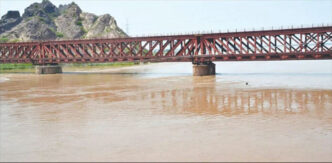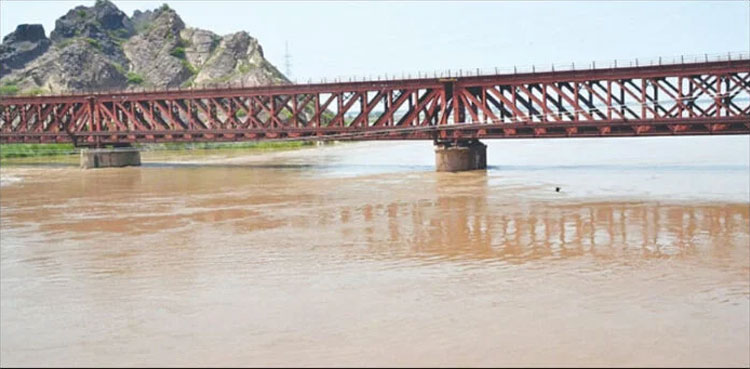India Releases Water into Sutlej River Amid Regional Flood Crisis, Sparking Tensions and Humanitarian Concerns
ISLAMABAD, PAKISTAN/NEW DELHI, INDIA – India has released additional water into the Sutlej River, exacerbating flooding in Pakistan’s Punjab province and intensifying bilateral tensions over water management amid an already severe monsoon crisis. The release, confirmed by Indian authorities as a necessary measure to manage overflowing dams, has drawn sharp accusations from Pakistan of “water aggression” and violations of the Indus Waters Treaty (IWT) .
🌊 Immediate Impact and Current Situation
Flood Warnings and Damage:
The Indian High Commission issued alerts for “extremely high flooding” at Harike and Ferozepur on the Sutlej River, prompting emergency responses in downstream Pakistani regions .
In Jalalpur Pirwala, breached embankments submerged multiple villages, necessitating urgent evacuations. Punjab Chief Minister mobilized rescue operations with boats and helicopters to relocate affected residents .
Regional Convergence of Floodwaters:
The Sutlej’s surge merged with high flows from the Ravi and Chenab rivers, creating an “exceptionally high flood” at Head Panjnad and threatening districts like Muzaffargarh and Rajanpur .
Thousands of acres of farmland were destroyed in Khairpur Tamewali, Rahim Yar Khan, and Liaquatpur, devastating agricultural livelihoods .
⚠️ Causes and Official Justifications
Dam Management Necessity:
Indian officials cited “humanitarian grounds” for the releases, noting that heavy monsoon rains had filled major reservoirs like Bhakra and Pong dams beyond safe capacities. Controlled releases were essential to prevent structural failures .
Data showed Pong Dam’s water level at 1,394.19 feet (four feet above its upper limit), with inflows dropping to 47,162 cusecs but outflows remaining high at 99,673 cusecs .
Climate Change Amplification:
Both India and Pakistan faced extreme monsoon rainfall, with Himachal Pradesh receiving 46% above-normal rainfall and Punjab experiencing 55% above-normal precipitation, triggering flash floods and landslides .
Experts emphasized that climate change has rendered historical dam design parameters “obsolete,” necessitating releases to avoid catastrophic breaches .
🏛️ Political and Diplomatic Tensions
Accusations of “Water Aggression”:
Pakistan’s Federal Minister Ahsan Iqbal accused India of “using water as a weapon,” claiming releases were timed to maximize damage without adequate warning .
The IWT, suspended by India after the April 2025 Pahalgam attack, requires data sharing and coordinated water management, which current interactions lack .
Humanitarian vs. Strategic Actions:
India issued flood warnings via diplomatic channels but withheld detailed hydrological data, citing the treaty’s suspension. Pakistani experts like Shiraz Memon argued that blaming India obscures domestic failures in flood preparedness .
Analysts noted that both countries face similar climate challenges, with India’s northern states also suffering significant flood damage and casualties .
🌾 Humanitarian and Agricultural Crisis
Displacement and Rescue Efforts:
In Pakistani Punjab, over 70,000 people and 169,000 livestock were evacuated, with relief camps and medical facilities established across affected districts .
Indian Punjab reported 1,900 villages submerged, 51 deaths, and 400,000 acres of crops damaged. Rescue operations involved the army, disaster response teams, and volunteers .
Economic Losses:
Farmers in both countries faced ruinous losses. Pakistani farmers saw standing crops washed away, while Indian farmers reported inadequate compensation for similar losses in 2023 .
Punjab Milkfed sought a ₹50 crore grant for cattle feed in flood-hit Indian districts, highlighting the strain on dairy industries .
🔍 Expert Analysis and Long-Term Implications
Infrastructure and Governance Failures:
Critics pointed to mismanagement by dam authorities like the Bhakra Beas Management Board (BBMB), which delayed releases until reservoirs were dangerously full .
Illegal sand mining, encroachments on floodplains, and inadequate desilting of drains worsened flooding in both countries .
Climate Resilience Needs:
Experts urged predictive water management models (e.g., India’s C-FLOOD system), floodplain zoning, and community-based preparedness to break the cycle of disaster-response compensation .
The Intergovernmental Panel on Climate Change projects a 20% increase in extreme rainfall events for the region, necessitating adaptive infrastructure .
💎 Conclusion
The Sutlej River water release underscores the complex interplay of climate change, infrastructure management, and bilateral politics. While India frames its actions as necessary for dam safety, Pakistan’s accusations of weaponized water reflect deep-seated tensions exacerbated by the suspended Indus Waters Treaty. As both nations grapple with unprecedented monsoon devastation, the crisis highlights an urgent need for renewed dialogue, transparent data sharing, and collaborative climate resilience strategies to protect vulnerable communities across borders







